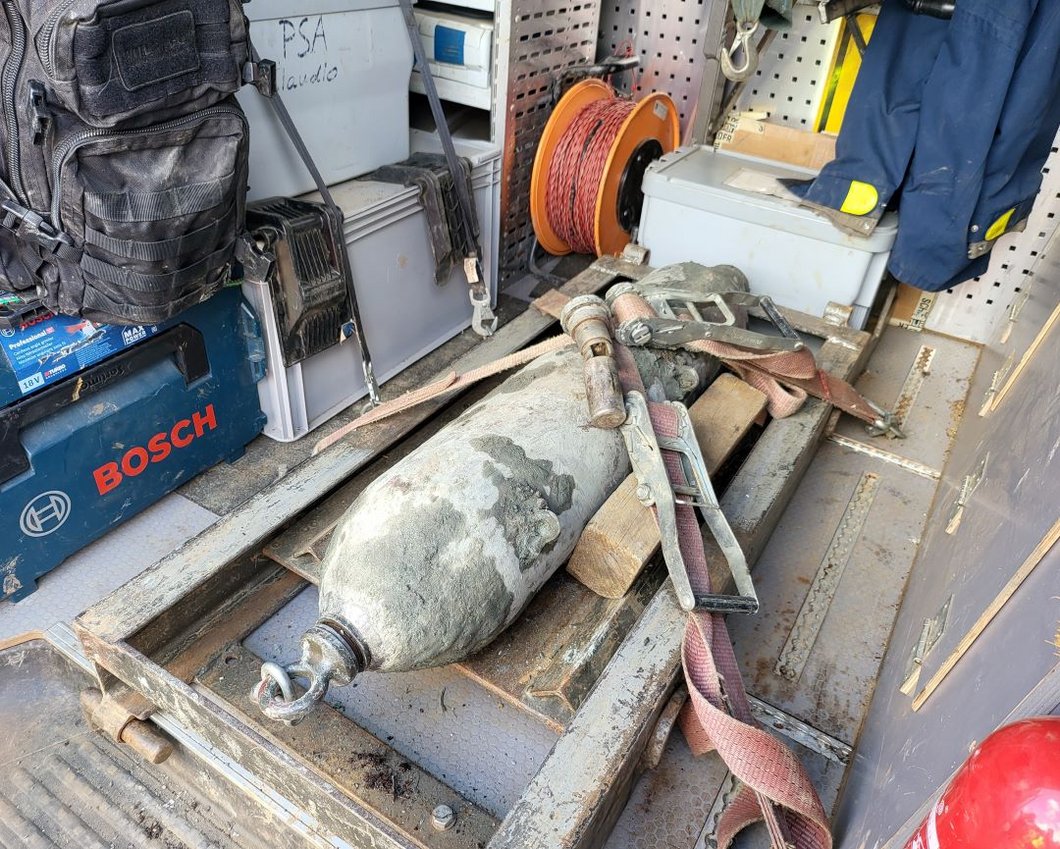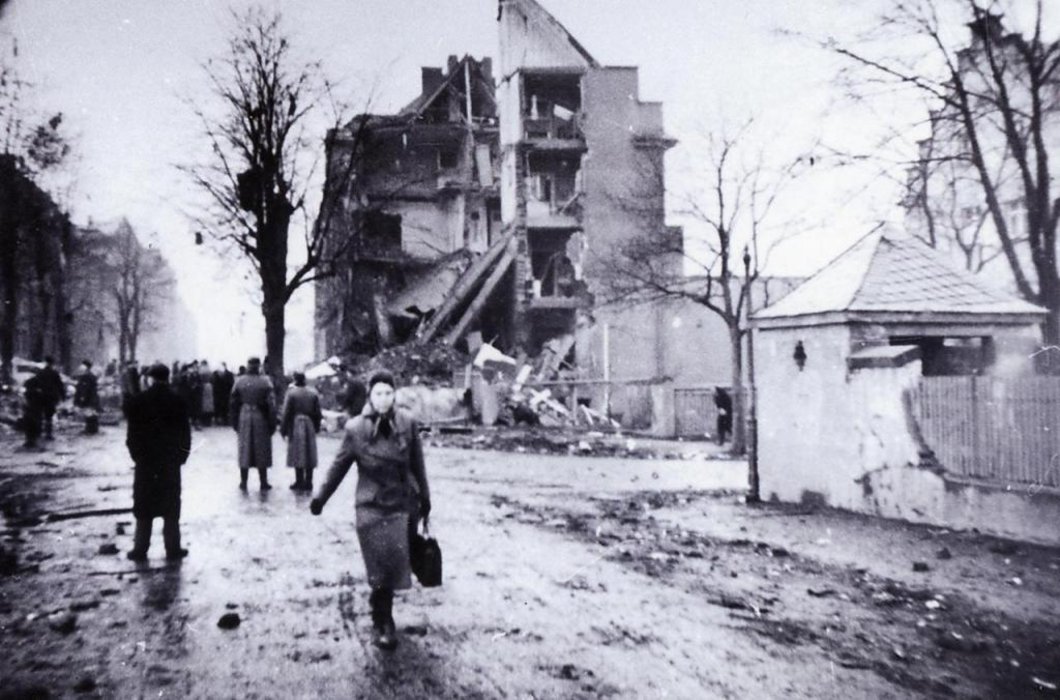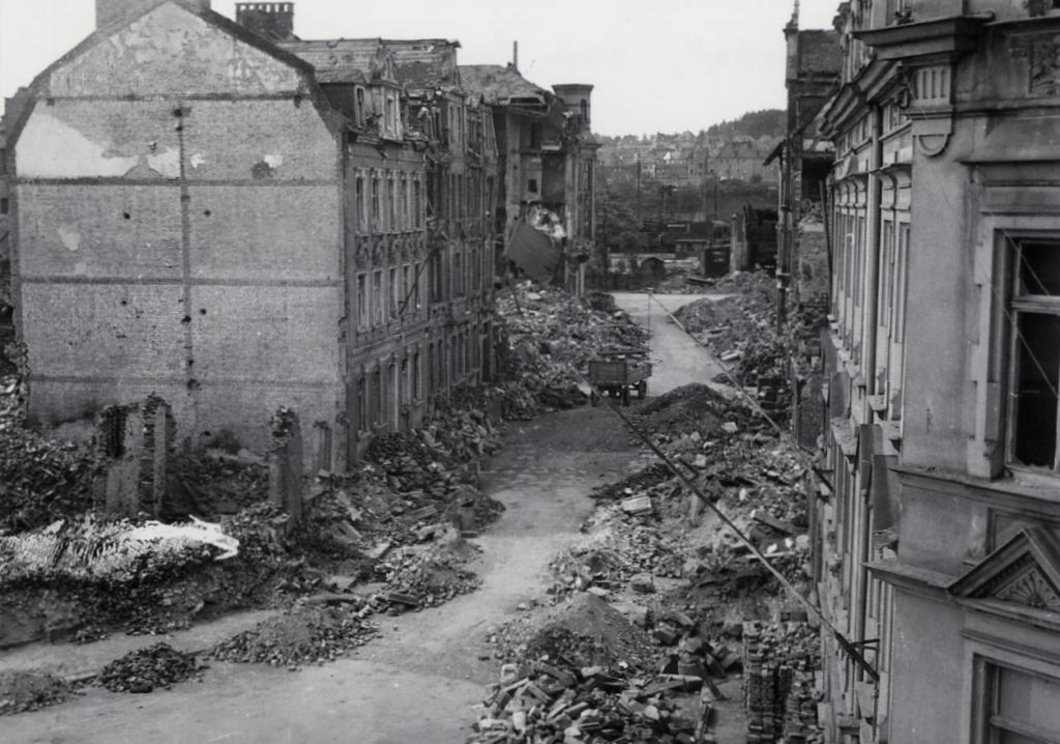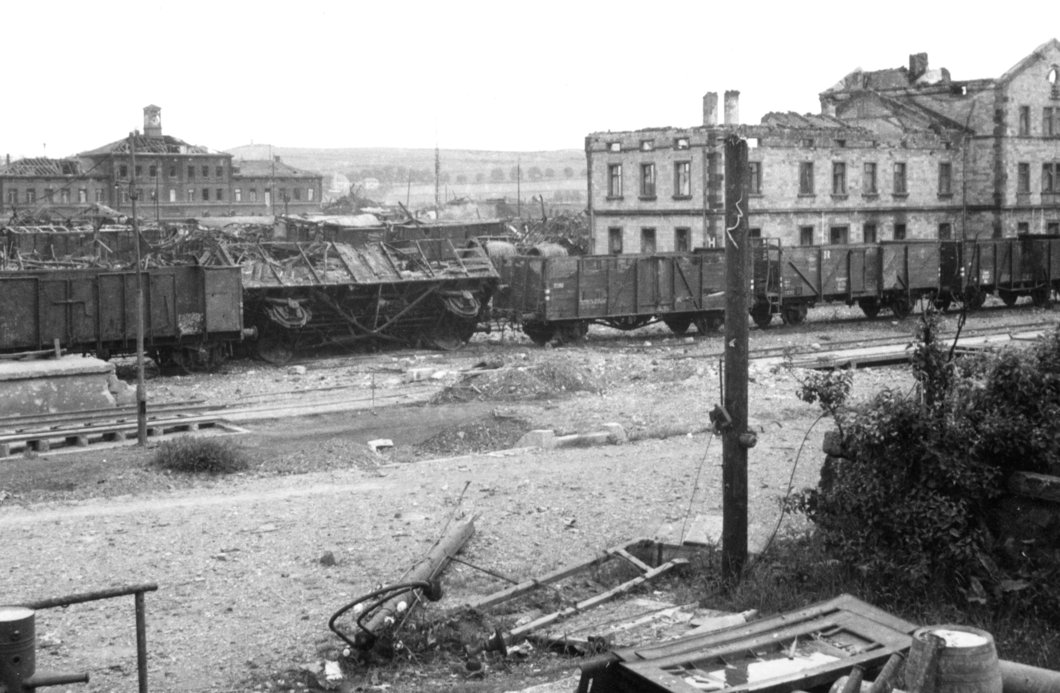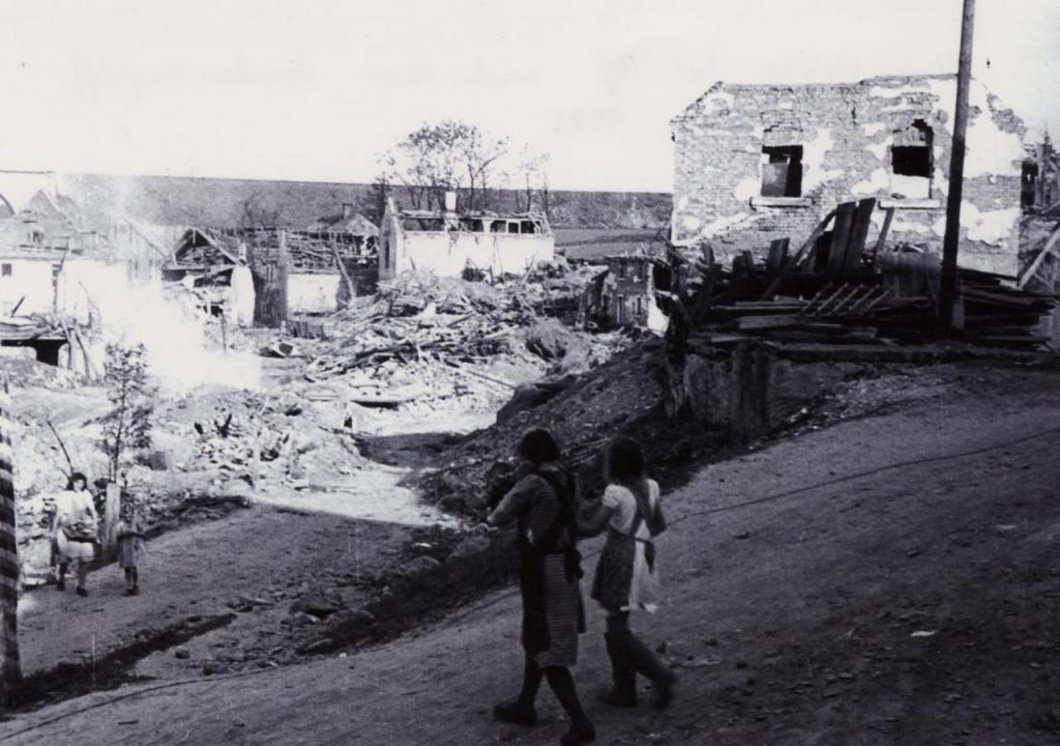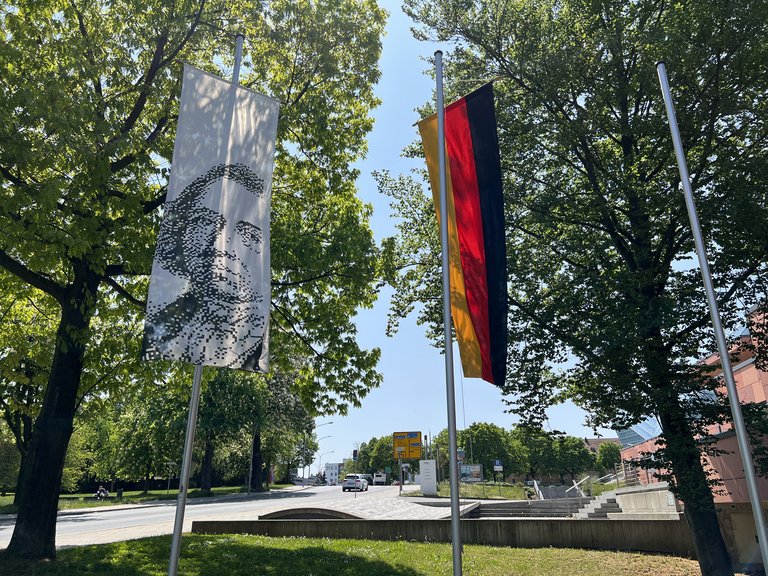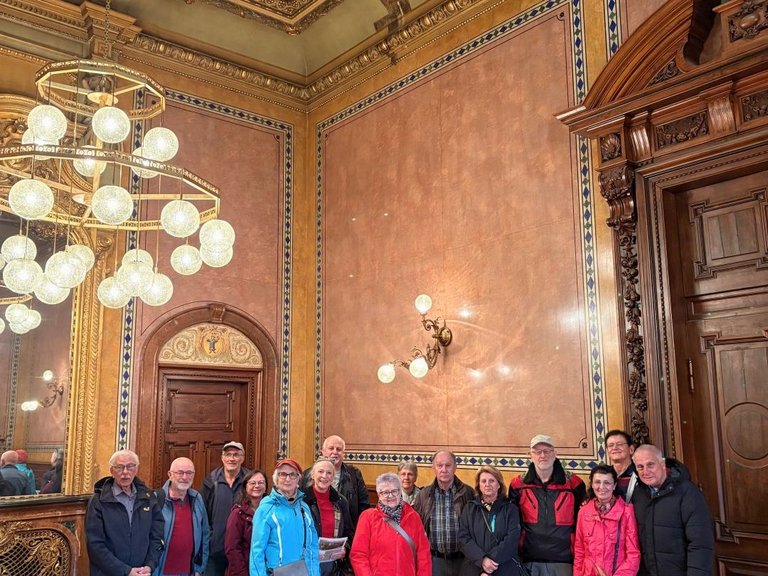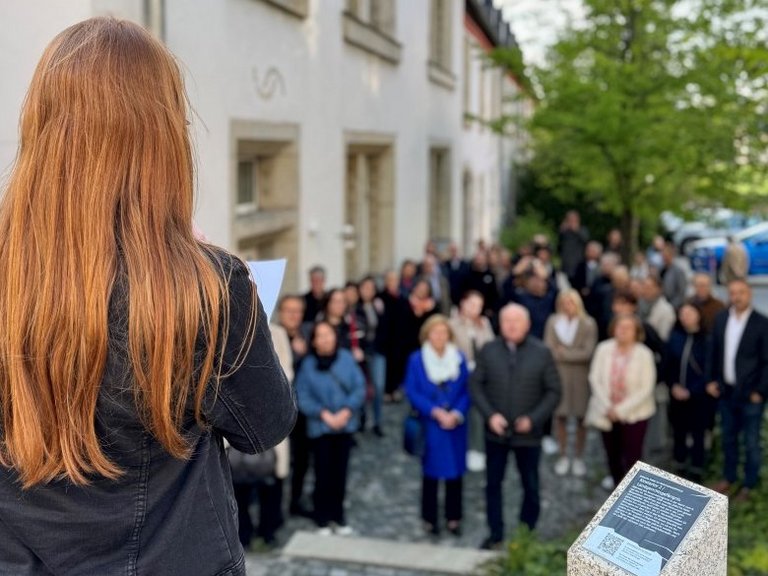Traces of the past
Remembering the horrors of the Second World War is of particular importance. Nationalist tendencies, war in Europe and social divisions remind us that peace and democracy cannot be taken for granted. In those days, the people of Hof experienced first-hand what war meant: nights of bombing, hunger, destruction, fear of the invading troops - but also the hope of a new beginning.
The fact that the past still leaves its mark was demonstrated last year when an aerial bomb from the Second World War was found in Hof. The danger was real: the train station, a large supermarket and possibly the nearby hospital had to be evacuated. Fortunately, the bomb was defused, but this discovery was a powerful reminder that history is not closed.
The advance of the Allies
The Allied landings in Normandy in June 1944 marked the beginning of the advance of US troops through France and Germany. By March 1945, they had crossed the Rhine and advanced deep into southern Germany. The 3rd US Army under General George S. Patton moved rapidly eastwards with the aim of occupying Bavaria. At the beginning of April, the 90th US Infantry Division reached the Saale region. The road to Hof was now open.
"From midnight to 6:45 a.m., motor vehicles and needed weapons thundered over the bridge at Blankenstein. The attack on Hof had been ordered to the 3rd Battalion of the 358th Infantry Regiment." (Source: US reports on the invasion of Hof, April 15, 1945).
From February to April 1945, Hof was the target of several Allied air raids. In addition to targeted bombing of railroad facilities and industrial plants, there were also attacks on civilian areas. For the period from February 15 to April 7, 1945, the Hofer Anzeiger reported a low-flying attack on the Schützenstraße area in which several soldiers were killed. Files also record an attack on April 5, 1945 between 1:40 p.m. and 3:10 p.m., the exact effects of which were not documented. It could have been escort fighters who were released to "free hunt" in search of ground targets. (Source: Jörg Wurdack, Military History of the City of Hof)
The devastating attack of April 8, 1945
On April 8, 1945, Hof became a major target for the US air forces. As part of the final destruction of the German transportation system, the American air force flew targeted attacks on the Reichsbahn facilities in Hof. According to the flight reports, this attack was part of a mission in which 101 Boeing B-17 bombers attacked the railroad site in Hof. They were supported by P-51 Mustang fighters.
An air alert was only sounded when the first smoke markers from the scout planes were placed over the target area. Many people tried to get out of the completely overcrowded main station to safety. Almost a hundred of them were killed by bombs on the way to the Alsenberg Tunnel, which was to serve as a makeshift air-raid shelter. The main station, the depots and the tracks were largely destroyed. The surrounding streets were particularly badly affected - numerous buildings in Theresienstraße, Sophienstraße and Bahnhofstraße were destroyed.
The toll that day was staggering: 244 civilians and 68 soldiers lost their lives, 80 buildings were completely destroyed and 140 others were severely damaged. The main water pipe from Zobelsreuth to the town was damaged, which meant that large parts of Hof had to fetch their drinking water from wells until the end of April. (Source: Jörg Wurdack, Military History of the City of Hof)
After the attack, the first looting took place in the town, mainly of mail lying around in the rubble of the station. The clearing and salvage work continued until April 15, 1945, while the last bomb victims were not recovered from under the rubble at Theresienstraße 1 and 4 and Königstraße 26 until the beginning of May 1945. In addition to the Hof fire department, factory fire departments, reserve units from the districts and an air defense unit of the air force were deployed. Support also came from the Offenbach am Main professional fire department, which had been evacuated from Offenbach. (Source: Jörg Wurdack, Military History of the City of Hof)
The end
Before 1945, Hof was a medium-sized industrial town with flourishing textile production and an important railroad junction. In the final years of the war, the population experienced increasing restrictions due to a lack of raw materials and bomb alarms. Despite the difficult military situation from a German perspective, Hof remained largely undestroyed for a long time as it was not a priority target for Allied air raids.
However, the city was caught up in the turmoil of war early on. The first forced laborers arrived shortly after the war began. They mainly worked for the Reichsbahn and in armaments factories, which were housed in former textile factories. By the fall of 1944, the number of foreign workers had risen to around 1750. The SS-Hauptzeugamt also ran an armaments factory in the Moschendorf porcelain factory. There, 100 prisoners from the Flossenbürg concentration camp were used as forced laborers. Four deaths in this subcamp are documented. After an evacuation march, 42 survivors arrived at Dachau concentration camp in mid-April 1945. (Source: Axel Herrmann, Little History of Hof)
"We knew that the war was lost, but somehow life went on in Hof - until the first bombs fell." (Contemporary witness Karl M., Hof city archive).
In April 1945, the war had already been decided for Germany. On April 14, American troops crossed the Saale north of Hof and encountered the last resistance from German troops. The town was taken on April 15 after individual battles were quickly put down.
"They came through Köditz with their tanks and jeeps. There were still shots from the windows, but it was no use. Then they stood in front of the town hall" (contemporary witness Hans L., Hof town archive).
More than 1000 German soldiers were captured in the region. "The Germans started a valiant fight with machine guns and bazookas, but it was useless. They were encircled in an ever-shrinking area of Hof" (US report on the capture of Hof, April 15, 1945).
The bridges in Hof played a decisive role in the last days of the war. The railroad bridge in Unterkotzau was the target of an Allied bombing raid on April 12, but withstood. Instead, the attack claimed almost 100 lives, including many prisoners of war. The Saale bridges also became strategically important: US troops crossed them on the afternoon of April 15 to finally take control of the town. (Source: Jörg Wurdack, Military History of the City of Hof)
The beginning
Soon after the occupation, General Eisenhower's first proclamation was plastered on houses in Hof: "The Allies are coming as victors, but not as oppressors." One of the first official acts of the military government was the appointment of Dr. Oskar Weinauer as the new mayor. The lawyer had helped numerous people against the unjust state and risked being sent to Dachau concentration camp in the final days of the war. But in the first weeks after liberation, the people of Hof were more concerned with survival than with a new democratic start. Food was scarce and there was hardly any fuel. The people of Hof received two pounds of bread and 200 grams of meat or sausage per week, potatoes were almost used up. The hunger rations did not improve for a long time, and the calorie count only reached its lowest point in May 1947.
The housing situation also worsened: although only 4.5% of the housing stock had been destroyed, the influx of around 18,000 refugees and displaced persons meant that reserves were quickly exhausted. In addition, there were massive bottlenecks in the supply of drinking water, as the infrastructure was only designed for a maximum of 35,000 people. "We are freezing to death in the land of coal," noted the writer Heinrich Jahn in 1945. "Our faces and hands are blue with frost. Sometimes we do calisthenics. How can you write or think in the cold?" (Source: Axel Herrmann, A Brief History of Hof)
After the end of the Second World War, denazification began in Hof, as in the whole of Germany, in order to free society from National Socialist influences. Lord Mayor Dr. Oskar Weinauer endeavoured to get public life back on track and implement the first denazification measures. To this end, all residents of Hof over the age of 18 had to fill out a questionnaire in which they disclosed their memberships in Nazi organizations and their professional activities during the Third Reich. As in other parts of Bavaria, adjudication chambers were set up, which acted as lay courts and decided on the classification and the associated consequences.
The measures ranged from dismissal from public office to confiscation of assets. However, the implementation of denazification encountered various challenges, including the sheer number of people to be reviewed and the difficulty of assessing individual guilt appropriately. Despite these difficulties, denazification was an important step for Hof in coming to terms with the National Socialist past and paving the way for a new democratic beginning.
